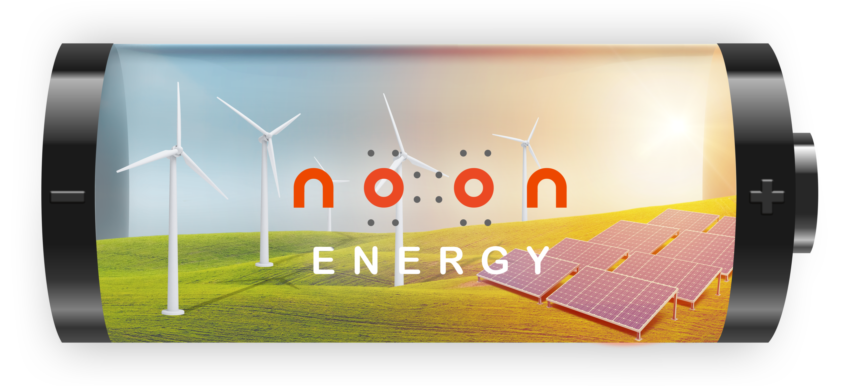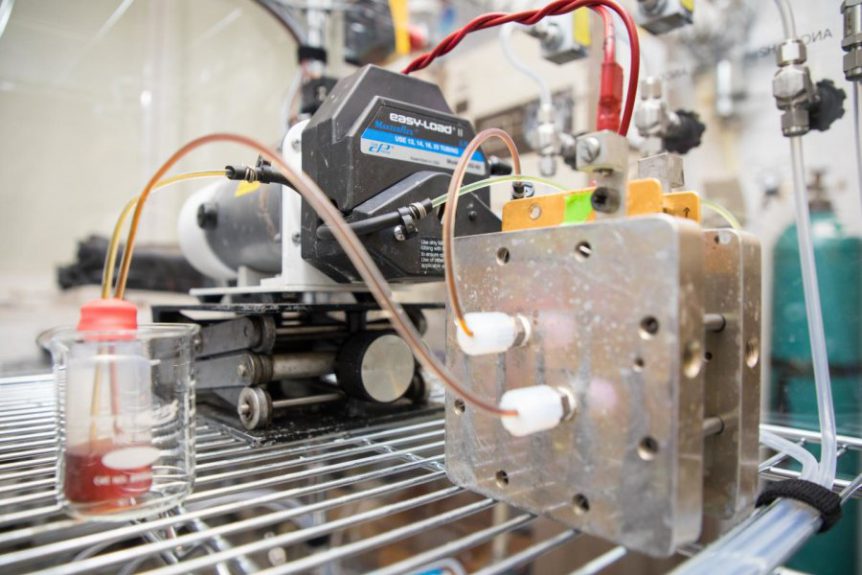Carbon and oxygen comprise a big part of the universe, and are essential to life on earth. They may also be the answer for long-term energy storage in a promising battery development from Noon Energy. “100 hours of storage at one-tenth the cost of lithium-ion batteries for long-duration storage.” It started on Mars According to Electrek, “Chris Graves, Noon Energy’s founder and CEO launched the company in 2018 After helping to develop NASA’s Mars Perseverance rover MOXIE device, which produces oxygen from the Martian carbon dioxide atmosphere.” According to TechCrunch, “The device sucks in carbon dioxide and strips off an oxygen atom, which it stores on board. The remaining carbon monoxide is exhausted into the thin Martian atmosphere. MOXIE, by the way, is an acronym for “Mars Oxygen ISRU Experiment. ISRU is another acronym, In Situ Resource Utilization,” or on-site use of available resources. MOXIE was also the name of an early carbonated soft drink or energy beverage. On Mars, MOXIE …
Flow Batteries Aging Well
As previously noted in the blog, the Tissandier Brothers flew their Siemens-powered electric airship in 1883 using a flow battery of their own design for energy storage. This technology gets a lot of attention for grid-based energy storage, but might have use in more mobile applications. Nano Flow Cell Technologies in Switzerland, for instance, used different salt waters to power their Quant and Quantino automobiles. Howard Handelman, a regular reader of the blog, shared the following two researches into modernizing flow cells. Stanford and Harvard researchers both cooked up different ingredients than one would normally find in a flow battery. Both groups achieved better than average performance and longevity. Stanford’s Liquid Metal Approach Stanford’s battery uses liquid metal that more than doubles the maximum voltage of conventional flow batteries. Things happen at normal temperatures, unlike flow batteries that need extremely high temperatures. The metals used are low-cost and non-toxic, unlike the dangerous fluids used in other flow batteries. William Chueh, …
Making the Siemens Motor Light and Powerful
Siemen’s recently-announced 260 kilowatt (348.5 horsepower) motor has brought several comments, one from a skeptical blog reader who asked some interesting questions. “VO” or “Volker” comments on Siemen’s claims for the motor, and throws in speculation as to the company’s veracity. (Note to readers who submit comments: please don’t attribute conclusions not intended by the editor, as in the last sentence of VO’s comment, and avoid speculating on the honorable intentions of those who announce new concepts or projects.) “The first three you mention are kind of concepts but with reasonable or high efficiency. What is the efficiency of the Siemens motor? And whose tech are they using? They have been circling the makers you mentioned for years. Did they license something or steal again? On most you mention, I could find efficiency numbers (Emrax with a whopping 98%?) and more or less detailed specs. I don’t know. Looks like a marketing ploy. “Typically, you would see boasting with efficiency …


